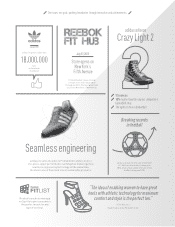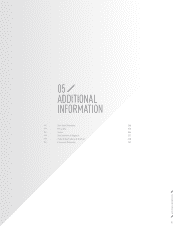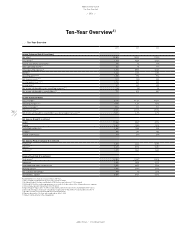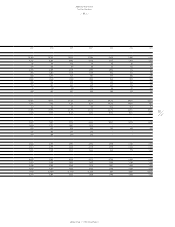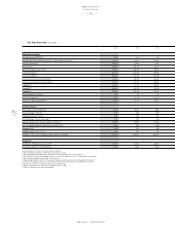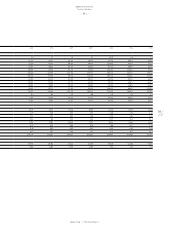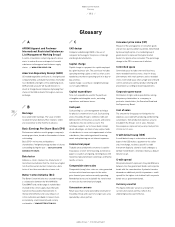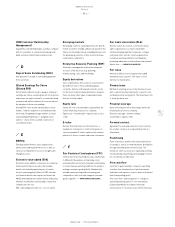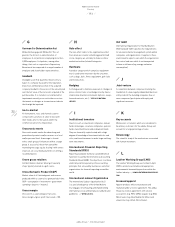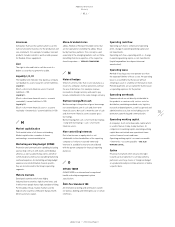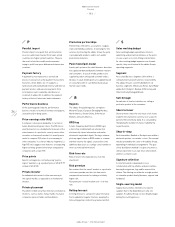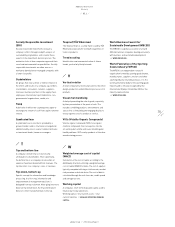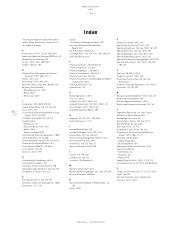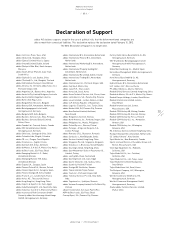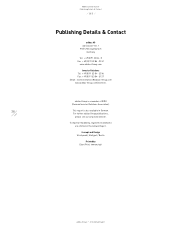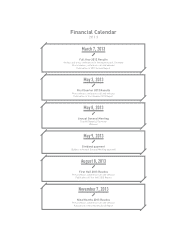Reebok 2012 Annual Report Download - page 276
Download and view the complete annual report
Please find page 276 of the 2012 Reebok annual report below. You can navigate through the pages in the report by either clicking on the pages listed below, or by using the keyword search tool below to find specific information within the annual report.
adidas Group
/
2012 Annual Report
Additional Information
254
2012
Glossary
/
05.2
/
/
P
Parallel import
Parallel imports are goods that are transferred
via a non-authorised channel from lower-priced
countries into higher-priced countries. They are
the result of retailers and/or end-consumers
trying to profit from price differences between two
countries.
Payment factory
A payment factory represents a centralised
process to execute all active payment transactions
(transfers, direct debits, etc.). It supports a
harmonised and standardised external and internal
payment process and executes payments from
local bank accounts owned by subsidiaries or
on behalf of adidas AG. In addition, the payment
factory collects all electronic bank statements.
Performance business
In the sporting goods industry, performance
business relates to technical footwear and apparel,
used primarily in doing sports.
Price-earnings ratio (P/E)
A company’s share price divided by its current or
future diluted earnings per share. The P/E ratio is
used by investors as a fundamental measure of the
attractiveness of a particular security versus other
securities or the overall market. It is usually more
useful to compare P/E ratios of one company to
other companies in a similar industry. In general, a
high P/E ratio suggests that investors are expecting
higher earnings growth in the future compared to
companies with a lower P/E.
Price points
Specific selling prices, normally using “psycho-
logical” numbers, e.g. a product price of US $ 99.99
instead of US $ 100.
Private investor
An individual who invests his/her own money in
the capital market, as opposed to an institutional
investor.
Private placement
Placement of debt securities directly to institutional
investors, such as banks, mutual funds, insurance
companies, pension funds and foundations.
Promotion partnerships
Partnerships with events, associations, leagues,
clubs and individual athletes. In exchange for the
services of promoting the adidas Group, the party
is provided with products and/or cash and/or
promotional materials.
Push model/pull model
A push-pull system in the retail business describes
the supply and demand dynamic between retailers
and consumers. In a push model, products are
supplied based on anticipated customer orders,
whereas in a pull model goods are supplied based
on consumer point-of-sale demand and actual
market sales trends.
/
R
Regions
The adidas Group distinguishes six regions:
Western Europe, European Emerging Markets,
North America, Greater China, Other Asian
Markets and Latin America.
RFID tag
A radio-frequency identification (RFID) tag is
a microchip combined with an antenna that
electronically stores information and can be
attached to any kind of object. The tag’s antenna
picks up signals from an RFID reader or scanner
and then returns the signal, usually with some
additional data (such as a unique serial number or
other customised information).
Risk-free rate
Rate of return to be expected on a risk-free
investment.
Risk premium
Extra return that the overall market or a particular
stock must provide over the risk-free rate to
compensate an investor for taking a relatively
higher risk.
Risk premium = overall market rate – risk-free
rate.
Rolling forecast
A rolling forecast is a projection about the future
that is updated at regular intervals, keeping the
forecasting period constant (e.g. twelve months).
/
S
Sales working budget
Sales working budget expenditures relate to
advertising and promotion initiatives at the point-
of-sale as well as to store fittings and furniture.
As sales working budget expenses are channel-
specific, they are allocated to the adidas Group’s
operating segments.
Segment
Also called Business Segment. Units within a
company that have profit and loss responsibility.
The adidas Group is currently divided into six
business segments: Wholesale, Retail, TaylorMade-
adidas Golf, Rockport, Reebok-CCM Hockey and
Other Centrally Managed Brands.
Sell-through
An indicator of how fast retailers are selling a
particular product to the consumer.
Share turnover
Share turnover states the total value of all shares
traded in the share price currency over a specific
period of time (normally daily). It is calculated by
multiplying the number of shares traded by the
respective price.
Shop-in-shop
Exclusive adidas, Reebok or Rockport area within a
wholesale partner’s or retailer’s store. The concept
may be operated by the store or the adidas Group,
depending on individual arrangements. The goal
of this distribution method is to give consumers a
similar experience to an own-retail environment,
albeit on a smaller scale.
Signature collection
A collection which is developed in close
collaboration with top athletes and personalities,
bearing the signature, logo and/or name of the
athlete. The offering can either be a single product
or a broader product family (footwear, apparel and
hardware).
Single-sourcing model
Supply chain activities limited to one specific
supplier. Due to the dependency on only one
supplier, the adidas Group can face disadvantages
during the sourcing process.


